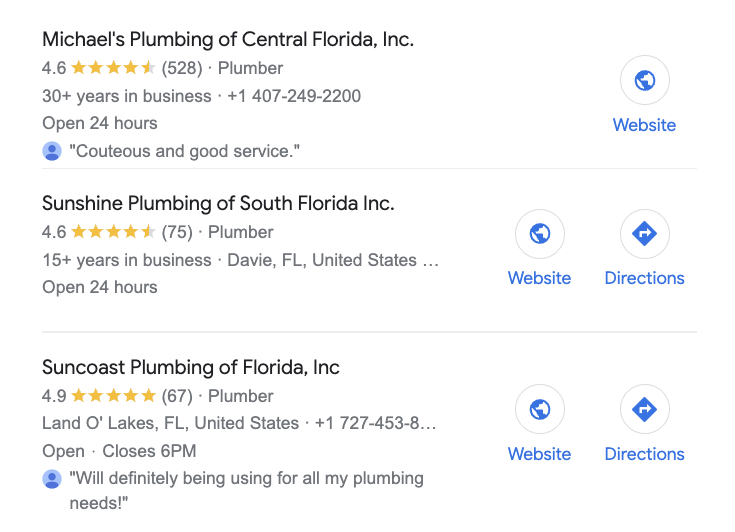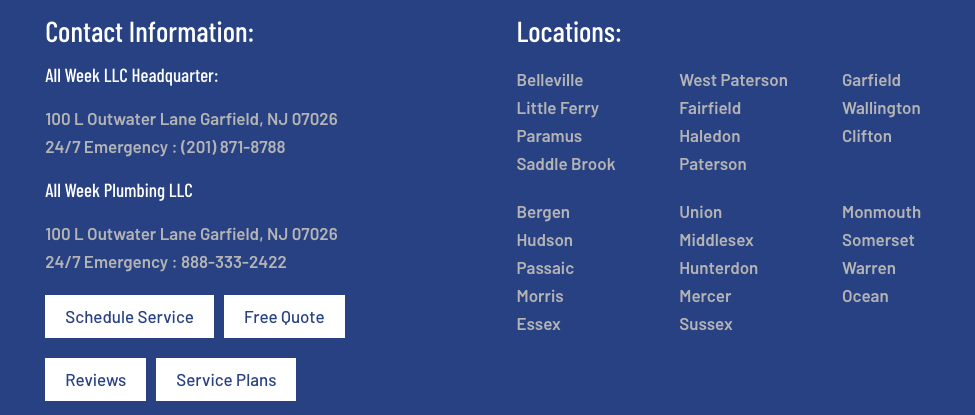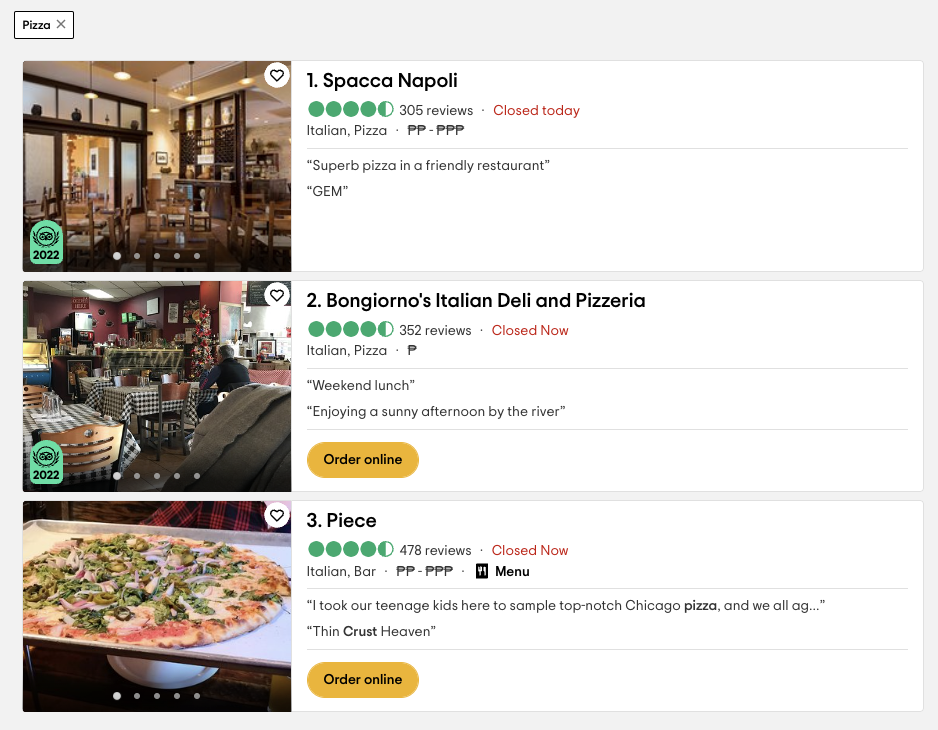Can you imagine the hassle of finding an electrician if every Google search returned global SEO results?
How many pages of search results would you have to comb through to find a beautician in your neighborhood?
On the other hand, think of how inefficient your digital marketing strategy would be if your local business had to compete with every competitor worldwide for clicks.
Luckily, Google has delivered a solution for this issue through local SEO.
By allowing you to target just the customers in your area, it’s a quick and easy way to give information about your business to the people who are most likely to patronize it.
But what if you have multiple locations in multiple cities?
Is it possible to rank for keywords that target multiple cities without hurting your local SEO?
Of course, it is.
But before you go running off to tweak your site for local searches, there’s one caveat: If you do it wrong, it can actually hurt you. So, it’s important to ensure you do it correctly.
It’s a bit more complex than regular old search engine optimization, but never fear – we’re here to guide you through the process.
Follow the instructions below, and you’ll rank in searches of all your locales before you know it. Ready to get started?
Why Is Local SEO Important?
If local SEO can potentially “hurt” you, why do it at all? Here are two good reasons:
Local SEO Attracts Foot Traffic
Imagine you’re out of town for a cousin’s wedding.
On the night before the big day, you’re in your hotel room when you crave a cheese pizza.
You pick up your phone and Google … what?
“Pizza?”
I don’t think so.
No, you’re probably going to Google a location-specific keyword, like [best pizza in Louisville].
When you get the results, you don’t say, “good to know,” and then head off to sleep.
No. Instead, you take the action that drove the search in the first place. In other words, you pick up your phone and order the pizza.
Or you get up, take a taxi, and dine out at that spectacular pizzeria.
And you’re not the only one doing this.
In fact, every month, searchers visit 1.5 billion locations related to their searches.
And you’re not the one in a million person who’s doing a local search, either.
Nearly 46% of Google searches have local intent.
That’s huge!
So, the next time you’re thinking of skipping local SEO, think again.
It could actually be your ticket to getting that random out-on-vacation dude to check out your pizza place. (Or beauty salon. Or hardware store – you get the point.)
Local SEO Ranks You Higher On Google
We’re all well-informed on the SEO KPIs you should track to rank on Google.
Two of these are:
- Clicks to your site.
- Keyword ranking increases.
With local SEO, you hit both of these birds with one stone. Note that it’s based on the searcher’s location distance/relevance to the business.
City Pages: Good Or Bad For SEO?
Long ago, in the dark ages of SEO, city pages were used to stuff in local keywords to gain higher rankings on Google.
For example, you’d create a page and write content on flower delivery.
Then, you’d copy your content onto several different pages, each one with a different city in the keyword.
So, a page for [flower delivery in Louisville], [flower delivery in Newark], and [flower delivery in Shelbyville], each with the exact same content.
As tends to be the case, it didn’t take long for Google to notice this spammy tactic.
When it rolled out its Panda Update, it made sure to flag and penalize sites doing it.
So, city pages can hurt your SEO and penalize your site.
This brings us to…
How Do I Optimize My Business For Multiple Locations On Google?
1. Use Google Business Profile
Remember, Google’s mission is to organize and deliver the most relevant and reliable information available to online searchers.
Its goal is to give people exactly what they’re looking for.
This means if they can verify your business, you’ll have a higher chance of ranking on the SERPs.
Enter Google Business Profile.
When you register on Google Business Profile, you’re confirming to Google exactly what you offer and where you’re located.
In turn, Google will be confident about sharing your content with searchers.
The good news is Google Business Profile is free and easy to use.
Simply create an account, claim your business, and fill in as much information as possible about it.
Photos and customer reviews (plus replying to reviews) can also help you optimize your Google Business Profile account.
2. Get Into Google’s Local Map Pack
Ever do a local search and get three featured suggestions from Google?
You know, like this.
 Screenshot from search for [plumbing near Florida], Google, November 2022
Screenshot from search for [plumbing near Florida], Google, November 2022Chances are that searchers will pick one of them and look no further for their plumbing needs. Tough luck, everyone else.
Of course, this makes it extremely valuable to be one of the three listed in the Local Map Pack. And with the right techniques, you can be.
Here are three things you can do to increase your chances of making it to one of the three coveted slots:
Sign Up For Google Business Profile
As discussed in the previous point, Google prioritizes sites it has verified.
Give Google All Your Details
Provide Google with all your information, including your company’s name, address, phone number, and operating hours.
Photos and other media work splendidly, too. And remember, everyone loves images.
Leverage Your Reviews
The better your reviews, the higher your chances of being featured on Google’s Local Map Pack.
3. Build Your Internal Linking Structure
Did you know that tweaking your internal linking structure will help boost your SEO?
Sure, external links pointing to your site are great.
But you don’t control them. And getting them takes a bit of work. If you can’t get them yet, internal linking will help you:
- Improve your website navigation.
- Show Google which of your site’s pages is most important.
- Improve your website’s architecture.
All these will help you rank higher on Google and increase your chances of discovery by someone doing a local search.
4. Build Your NAP Citations
NAP stands for name, address, and phone number.
Generally, it stands for your business information online.
The first place you want your NAP on is your website.
A good rule of thumb is to put this information at the bottom of your homepage, which is where visitors expect to find it.
 Screenshot from allweekplumbing.com, November 2022
Screenshot from allweekplumbing.com, November 2022It’s also great to list your business information on online data aggregators.
These aggregators provide data to top sites like TripAdvisor, Yelp, and Microsoft Bing.
Here are some of the big ones you shouldn’t miss.
- Acxiom.
- Data Axle (formerly known as Infogroup).
- Factual.
- Neustar Localeze.
Listing your website on all the top aggregators sounds tedious, but it’s worthwhile if you want to get a feature like this.
 Screenshot from Trip Advisor, November 2022
Screenshot from Trip Advisor, November 2022Important note: Make sure that your NAPs are consistent throughout the web.
One mistake can seriously hurt your chances of getting featured on Google’s Local Map Pack or on sites like Yelp and TripAdvisor.
5. Use Schema Markup
Sometimes called structured data or simply schema, schema markup on your website can significantly affect your local SEO results.
But if you’re not a developer, it can look intimidating.
Don’t worry – it’s not as difficult to use as you might think.
A collaboration between Google, Yahoo, Yandex, and Microsoft, Schema.org was established in 2011 to establish a common vocabulary between search engines.
While it can be used to improve the appearance of your search result, help you appear for relevant queries, and increase visitor time spent on a page, Google has been very clear that it does not impact search rankings.
So, why are we talking about it here? Because it does improve the chances of your content being used for rich results, making you more eye-catching and improving click-through rates.
On top of that, the schema provides several different property options relevant to local SEO, allowing you to select relevant schema categories.
By selecting Schema.org/bakery for your cupcake shop, you’re helping search engines better understand the topic of your website.
After you’ve selected the right category, you need to select the sub-properties to ensure validation. This includes the business name, hours, the area served, etc.
The Schema.org/areaServed on the local landing page should always match the service areas set up in a Google Business Profile, AND your local landing page should mention those same towns in its on-page content.
For a full list of required and recommended schema properties and information on validating your structured data, read this article. Using a plugin, you can also find more information about Schema markup for WordPress.
6. Optimize Your Site For Mobile
If you wake up in the middle of the night to find your bathroom flooding with water from an exploded faucet, do you:
- Run to your laptop and do a local search for the best emergency plumber.
- Grab your phone and type “emergency plumber” into your Chrome app.
If it’s 3 a.m., chances are you chose No. 2.
But here’s the thing.
People don’t only choose their smartphones over their computers at 3 a.m.
They do it all the time.
Almost 59% of all website traffic comes from a mobile device.
 Screenshot from Statista, November 2022
Screenshot from Statista, November 2022As usual, Google noticed and moved to mobile-first indexing.
All this means your site has to be optimized for mobile if you want to rank well on Google, especially for local SEO.
Here are six tips on making your website mobile-friendly:
- Make sure your website is responsive and fits nicely into different screen sizes.
- Don’t make your buttons too small.
- Prioritize large fonts.
- Forget about pop-ups and text blockers.
- Put your important information front and center.
- If you’re using WordPress, choose mobile-friendly themes.
Bonus Tip: Make Your Most Important City Pages Unique
If you want to name all the cities in a region you serve, just list them on the page – you don’t need an individual page for each city to rank in most cases.
To make the pages different, write original content for each area or city.
Which means it’s up to you.
You can simply list all the cities you serve on one page.
Or you can go ahead and create individual pages for each city.
When you take this step, make sure each page’s content is unique.
And no, I don’t mean simply changing the word “hand-wrestling” to “arm-wrestling.”
You need to do extra research on your targeted location, then go ahead and write specific and helpful information for readers in the area.
For example:
- If you’re a plumber, talk about the problem of hard water in the area.
- If you’re a florist, explain how you grow your plants in the local climate.
- If you’re into real estate, talk about communities in the area.
Here’s an excellent example from 7th State Builders.

Adding information about a city or town is also a great way to build your client’s confidence.
A OnePoll survey conducted on behalf of CG Roxane found 67% of people trust local businesses – by identifying your understanding of the situations and issues in a locale, you’re insinuating that you’re local – even if you have multiple locations spread throughout the country.
They’ll see how much you know their area and trust you to solve their area-specific problems.
Important note: Ensure this information goes on all variations of your website.
With Google’s mobile-first index in place, you don’t want to fall in the rankings simply because you failed to optimize for mobile.
5 Tools To Scale Your Local SEO
What if you have 100s of locations? How do you manage listings for them?
Here are some tools to help you scale your local SEO efforts.
Ready To Target Local SEO?
Hopefully, I’ve made it very clear by this point – local SEO is important. And just because you’re running multiple locations in different cities doesn’t mean you can’t put it to work for you.
How you go about that is up to you. Do you want to create one landing page for each location? Or do you want to list all your locations on the same page?
Whatever you choose, be aware of the power of local SEO in attracting customers to your neighborhood.
Just make sure you’re doing it correctly. If, after reading this piece, you’re still unsure what steps to take, just imagine yourself as a customer.
What kind of information would you be looking for?
What would convince you that your business is perfect for their needs?
There’s a good chance location will be one of the driving factors, and the best way to take advantage of that is with local SEO.
More Resources:
- Local SEO For Small Businesses: 7 Top Ways To Gain Visibility
- 5 Key On-Page Optimizations For Local Organic SEO
- Local SEO: The Definitive Guide To Improve Your Local Search Rankings
Featured Image: New Africa/Shutterstock






![Google AIO: 4 Ways To Find Out If Your Brand Is Visible In Generative AI [With Prompts]](https://www.searchenginejournal.com/wp-content/uploads/2025/03/sidebar1x-187.png)